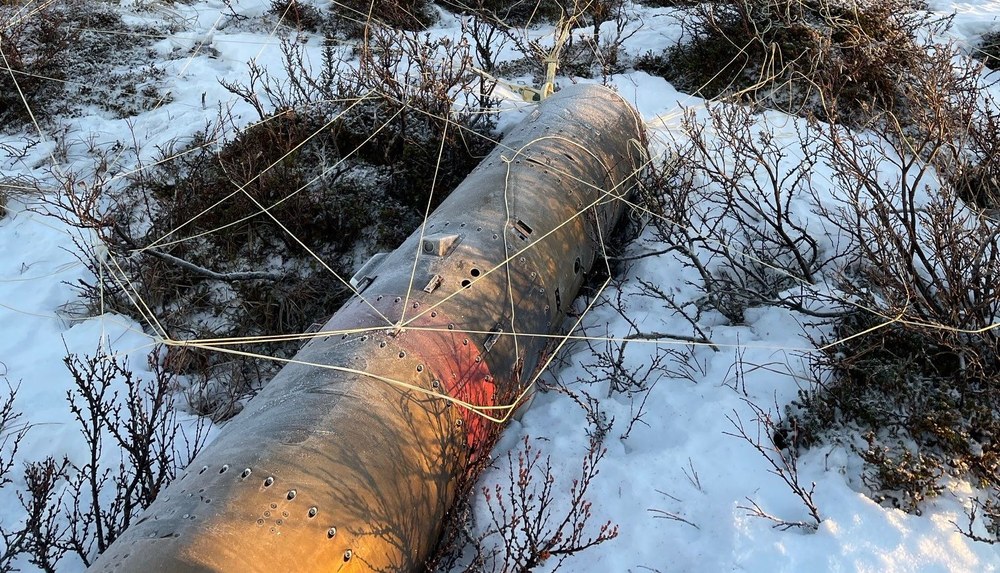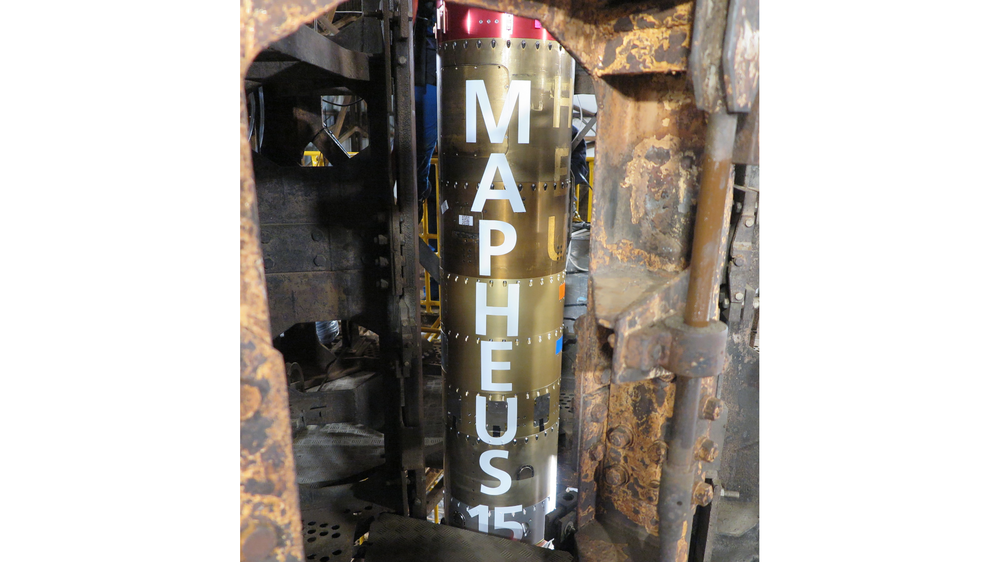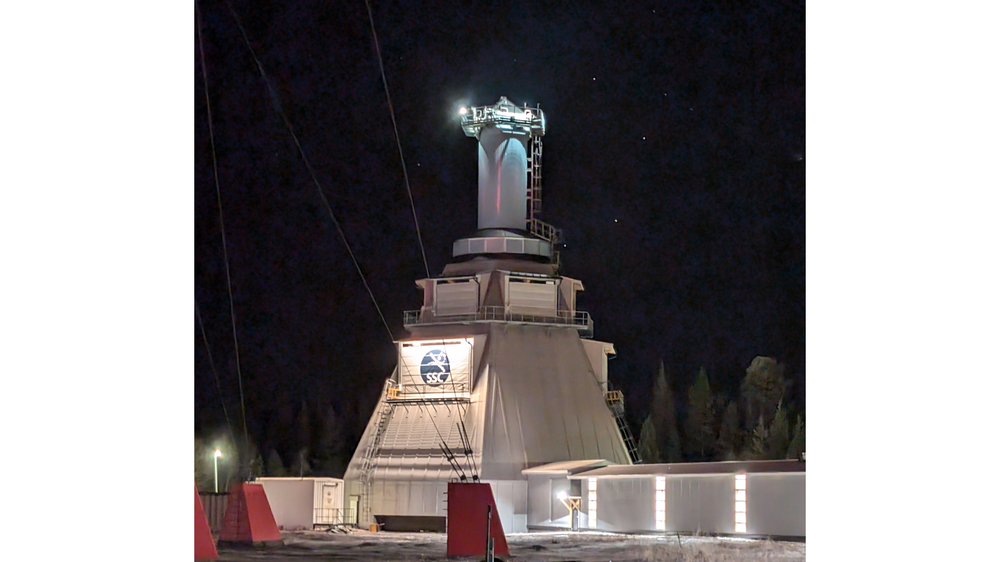600th rocket launch beyond the Arctic Circle



- DLR's MAPHEUS 15 research rocket has successfully launched.
- It marks the 600th launch from the Esrange rocket base in the north of Sweden.
- The rocket carried 21 scientific experiments onboard.
- Focus: Space, research under microgravity conditions
On 11 November 2024 at 07:38 UTC, a research rocket soared over the icy expanse of Swedish Lapland for the 600th time. The mission, MAPHEUS 15, carried 21 scientific experiments from both the German Aerospace Center (Deutsches Zentrum für Luft- und Raumfahrt; DLR) and international collaborators.
During its flight above the Arctic Circle, MAPHEUS 15 reached a record-breaking altitude of 309 kilometres, providing seven minutes of microgravity for its experiments – an increase over the previous six minutes. While this additional minute may not seem like much, it is significant for science research; terrestrial microgravity experiments, like those conducted in drop towers or on parabolic flights, typically offer just a few seconds of 'weightlessness'.
This higher altitude was made possible by a new rocket motor configuration, which combines the tried-and-tested 'Improved Malemute' – originally a military upper stage repurposed for scientific use – with the RED KITE motor as a booster. RED KITE is a joint innovation from Bayern-Chemie and DLR.
More experiments than ever before
The latest MAPHEUS mission features a record number of experiments onboard. "We have many smaller experiments, with their design inspired by CubeSats and each side of the cube measuring ten centimetres," explains Thomas Voigtmann, MAPHEUS project manager at the DLR Institute of Materials Physics in Space. "To accommodate all these small experiments, we have developed two specialised rocket segments called MOSAIC, which can house these compact set-ups. This arrangement reduces development time and costs for each experiment, allowing a greater number to fly onboard."
Voigtmann adds, "Other MAPHEUS highlights include new collaborations with Australian institutions, including the University of Adelaide and La Trobe University in Melbourne, plus Enable Aerospace, a company which has developed its own experimental hardware. We are also testing a smartwatch developed in collaboration with Samsung, adesso and LambSpace – a NewSpace company from North Rhine-Westphalia – which is set to be spaceflight tested for use in life support systems and the cryptographically secure collecting of health data."
In addition to experiments from DLR's Institute of Materials Physics in Space and various international partners, the DLR Institutes of Materials Research, Aerospace Medicine and Solar-Terrestrial Physics, as well as the Space Operations and Astronaut Training institution, are participating in the mission's test campaign.
Overview of experiments
- MOSAIC-A and B: A modular system developed at the DLR Institute of Materials Physics in Space for CubeSat-shaped experiments, enabling rapid development cycles for small experiments. A total of 16 modules can be accommodated, with MAPHEUS 15 carrying eleven experiments, as some consisted of two modules.
- TEGonaut: Testing of thermoelectric generators (TEG) as a self-sufficient electricity power source for sensors (DLR Institute of Materials Research, in MOSAIC).
- RESITEK: Reflectometry measurements of GPS signals to study the upper atmosphere, with applications in space weather prediction and disaster risk reduction (DLR Institute of Solar-Terrestrial Physics and the DLR Institute of Materials Physics in Space, in MOSAIC).
- MARS 3D printer: ARTEC experiment studying the solidification of materials in microgravity (DLR Institute of Materials Physics in Space )
- COSMO: Testing of new data transfer technologies (DLR Space Operations and Astronaut Training)
- DEIMOS-A and B: Two powder-transport technology experiments using electromagnetic fields for 3D printing in microgravity (DLR Institute of Materials Physics in Space, in MOSAIC)
- FORMAGGI: A high-power test payload, akin to a pizza oven, designed to examine the thermophysical properties of plastic materials in microgravity (DLR Institute of Materials Physics in Space, in MOSAIC)
- SENSAITION: Real-time data acquisition with AI methods during flight (DLR Institute of Materials Physics in Space, in MOSAIC)
- GASFEX: A demonstration experiment located in the rocket’s nose cone, showcasing low-threshold access to spaceflight for universities (DLR Space Operations and Astronaut Training, with the University of Southern Queensland, TUM and Hyperflight Systems)
- Galaxy Watch goes outer space: A flight test of a Samsung Galaxy Watch Ultra smartwatch equipped with specialised software, to assess its use as a 'smart wearable' for the health monitoring of participants in long-term isolation studies (DLR Institute of Aerospace Medicine, with adesso, Samsung and Lamb Space, in MOSAIC).
- NyMEx: Investigating the impact of reduced gravity on transport properties in cell membranes (DLR Institute of Materials Physics in Space and DLR Institute of Aerospace Medicine, with the University of Bordeaux and University of Düsseldorf)
- MiniWeed: Studying the impact of gravity on duckweed, a plant species and potential food source for long-term space missions (DLR Institute of Aerospace Medicine, with the University of Adelaide and La Trobe University, in MOSAIC)
- MiniPlax: Investigating the impact of gravity on simple multicellular organisms (DLR Institute of Aerospace Medicine, with the University of Veterinary Medicine Hannover.)
- Gastronaut-01: Researching gravitational effects on cancer cells (Enable Aerospace, in MOSAIC)
- REVTEX and VIBAQ: Vibration measurements to characterise the new RED KITE engine (Airbus and DLR Space Operations and Astronaut Training)
- SVALIN2: Characterisation of new solar cell materials, including organic and thin-film quantum dot cells (TU Munich)
Related links
About the project
MAPHEUS, short for 'Material Physics Experiments under Microgravity', is a high-altitude research programme initiated by the German Aerospace Center (DLR). Since 2009, the programme has conducted regular flights using sounding rockets. Scientifically, it is managed by the DLR Institute of Materials Physics in Space and the DLR Institute of Aerospace Medicine. The Mobile Rocket Base (MORABA), part of DLR's Space Operations and Astronaut Training institute, oversees the research flights launched from the Esrange site, operated by the Swedish Space Corporation (SSC).
